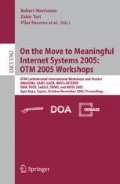Abstract
Electronic interlocking systems using micro-computer are developed to overcome the problems of conventional relay interlocking systems and to minimize the cost and the maintenance requirements when the system needs to be rebuilt or expanded.[1] However, it is very difficult to diagnose the root cause in case of a single device problem since there are multiple causes. Therefore, guaranteeing the stability to a equivalent level to relay interlocking systems is the main requirement for electronic interlocking systems to be benefit. This can be accomplished by a careful design of both the hardware and software and their interface. The stability of the interlocking software is determined by not only its reliability and efficiency of interlocking implementation but also by the convenience of maintenance. The method of real-time system development and (the) method of conventional data have an error of the confidential side, error detecting and error recovery, problem of exception situation processing, reusability of software of process and maintenance aspect and so on. The method for supplement shortcoming of these methods is real-time software development methodologies of object center. These methodologies play important role in solving complexity system, maintaining and requiring increased problems of software quantity as applying to object intention concept. But, because these methods are putting emphasis on analysis than design method, which are quitting emphasis on object structure among the analyses, development of real-time software has lacking aspects. A design approach for developing interlocking software to improve the problems of existing systems was proposed in this paper. A design and modeling strategy based on the Real-time Object-Oriented Modeling (ROOM)[2] procedure, which is the most appropriate approach in the initial stage of real-time software development, is proposed. Although it is an object-oriented method, it is a top-down design method that is similar to the structural analysis method based on the ROOM that is effective for real-time problems; therefore, it is not only convenient for standardization, expansion, and maintenance but also can contribute to improved reliability and stability of the electronic interlocking system.
Access this chapter
Tax calculation will be finalised at checkout
Purchases are for personal use only
References
Cribbens, A.H.: Solid-State Interlocking (SSI): An Integrated Electronic Signaling System For Mainline Railway. IEE Proc. 134, 148–158 (1987)
Selic, B., Gullekson, G., Ward, P.T.: Real-Time Object-Oriented Modeling. John Wiley & Sons, Chichester (1994)
Author information
Authors and Affiliations
Editor information
Editors and Affiliations
Rights and permissions
Copyright information
© 2005 Springer-Verlag Berlin Heidelberg
About this paper
Cite this paper
Kim, JS., Yoo, JY., Noh, HY. (2005). Software Design of Electronic Interlocking System Based on Real-Time Object-Oriented Modeling Technique. In: Meersman, R., Tari, Z., Herrero, P. (eds) On the Move to Meaningful Internet Systems 2005: OTM 2005 Workshops. OTM 2005. Lecture Notes in Computer Science, vol 3762. Springer, Berlin, Heidelberg. https://doi.org/10.1007/11575863_11
Download citation
DOI: https://doi.org/10.1007/11575863_11
Publisher Name: Springer, Berlin, Heidelberg
Print ISBN: 978-3-540-29739-0
Online ISBN: 978-3-540-32132-3
eBook Packages: Computer ScienceComputer Science (R0)

